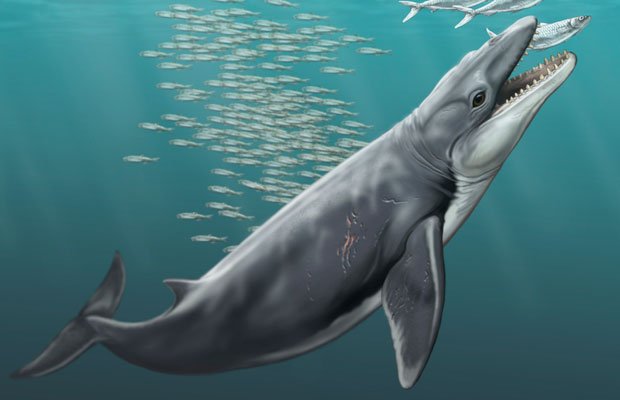In a remarkable and unexpected twist, marine archaeologists have announced the discovery of an astonishing prehistoric creature that has been dubbed the “King Tut Whale.” This unprecedented finding has sent shockwaves through the scientific community and captivated the imagination of the world, offering a unique window into the mysteries of the deep past.
The King Tut Whale, named in homage to the famous Egyptian pharaoh Tutankhamun, was uncovered during a recent expedition in the depths of the Pacific Ocean. Led by a team of marine biologists and archaeologists from the Oceanic Research Institute, the expedition was originally focused on studying deep-sea ecosystems and their geological features. However, what they stumbled upon far exceeded their expectations.
The fossilized remains of the King Tut Whale were found at a depth of approximately 2,500 meters, nestled among the submerged rock formations of an underwater canyon. Initial examinations suggest that the creature belonged to a previously unknown species of ancient whale, estimated to have lived around 30 million years ago during the Oligocene epoch. Its size is estimated to be around 15 meters in length, making it comparable to some of the largest modern-day whales.
What sets the King Tut Whale apart from its modern counterparts is the intricate pattern of preserved bones and cartilage, which hint at a level of sophistication not typically seen in fossils of this age. The state of preservation is so exceptional that some of the intricate anatomical details, such as the shape of its flippers and the structure of its ear bones, are remarkably intact. This unexpected level of preservation has already ignited intense interest among scientists seeking to unlock the secrets of this ancient ocean giant.
Dr. Evelyn Martinez, is the lead marine biologist on the expedition. Their discovery also raises intriguing questions about the environmental and ecological conditions that existed during the Oligocene epoch. Preliminary analyses of sediment samples taken from the site are expected to shed light on the ecosystem in which the King Tut Whale lived, as well as the potential factors that contributed to its preservation.
The King Tut Whale’s discovery showcases the critical role that marine archaeology plays in unearthing hidden treasures from the past, even in the uncharted depths of our oceans. As scientists continue to study the remains and surrounding geological formations, they hope to unravel the mysteries of this ancient creature and gain valuable insights into the history of life on Earth.
In the coming months, the King Tut Whale is expected to become a focal point of scientific research and public fascination, as experts work tirelessly to reconstruct its appearance, behavior, and place within the ancient marine ecosystem. As we eagerly await further revelations from the depths, the King Tut Whale stands as a testament to the boundless wonders that our oceans continue to offer up to those who dare to explore their depths.
